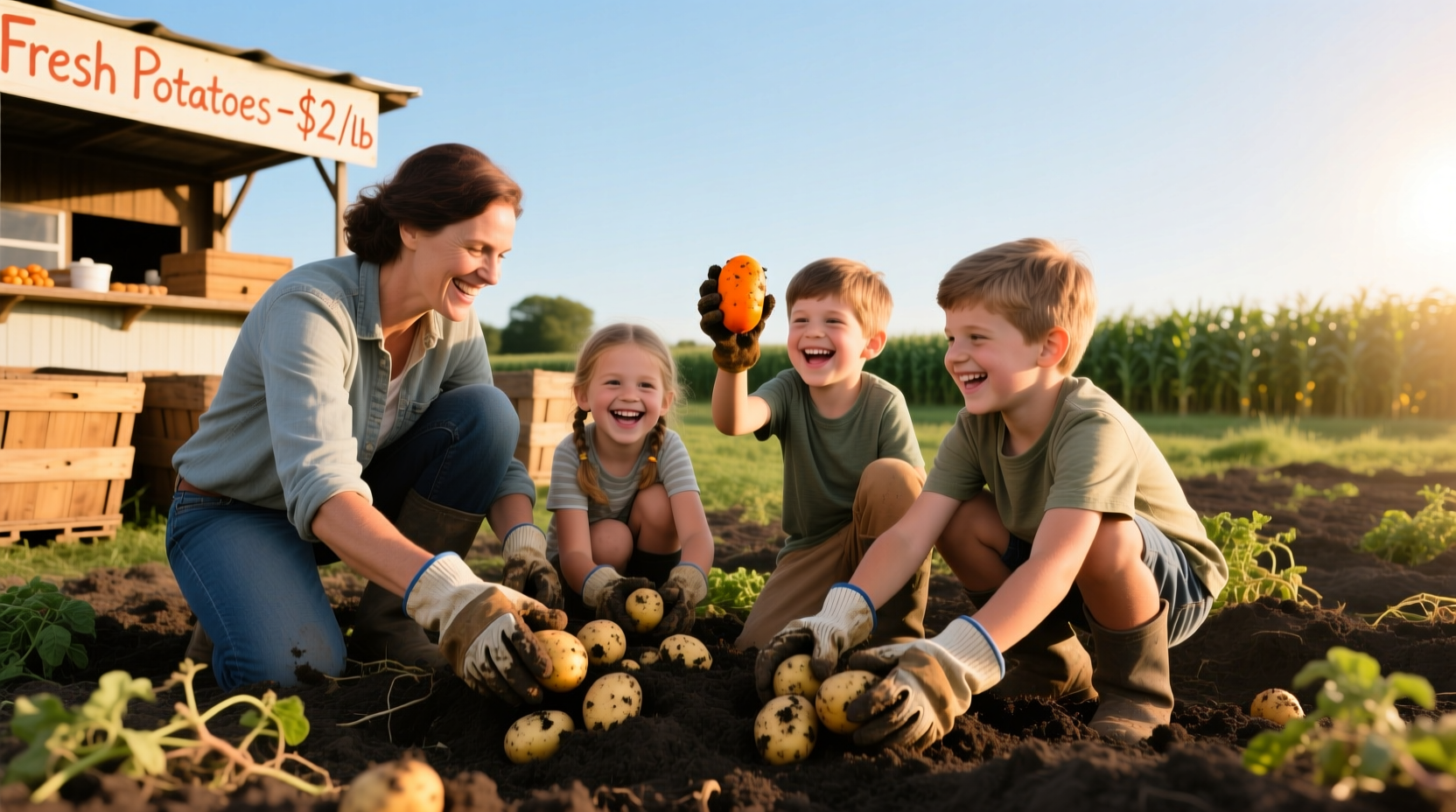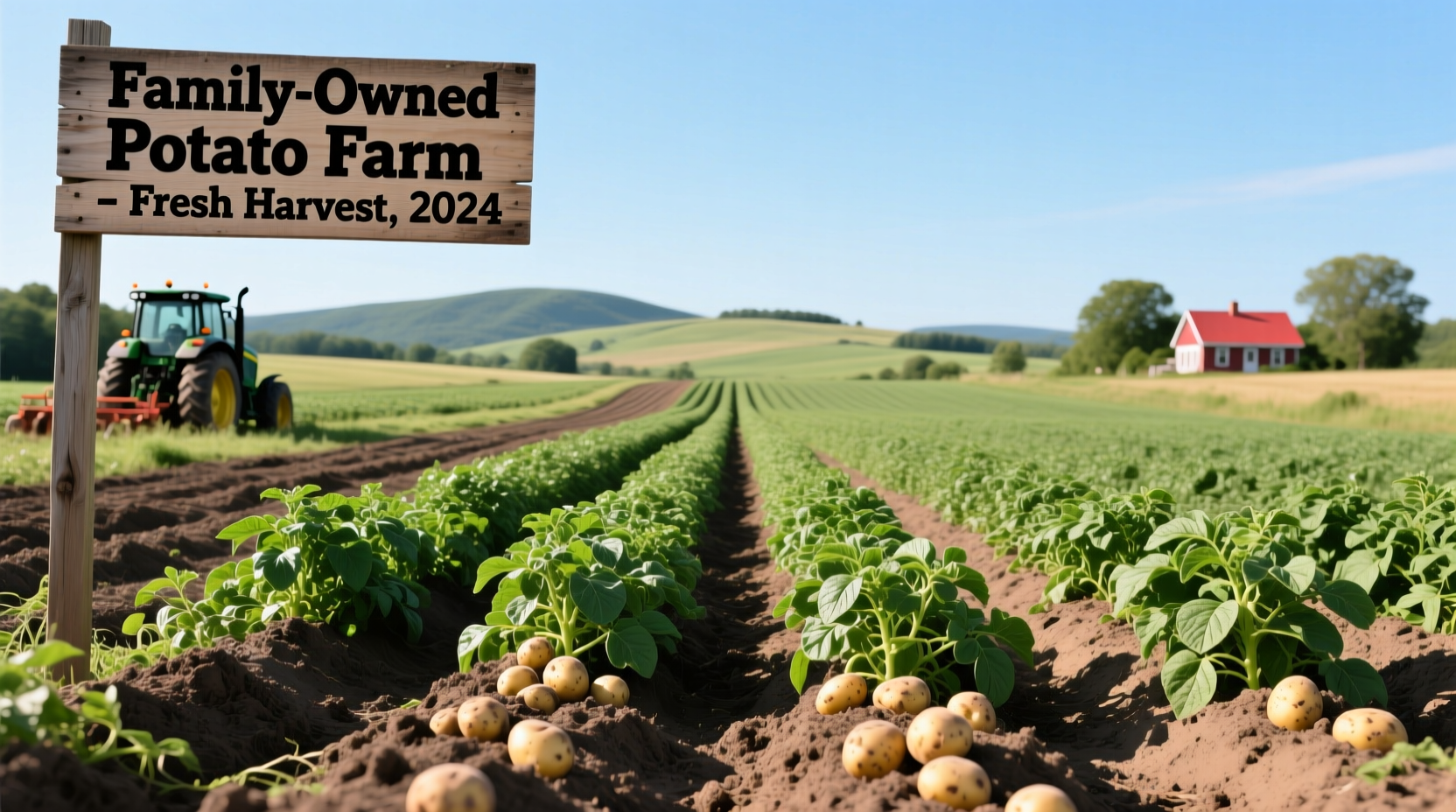Searching for potato farming near me? You'll typically find commercial growers within 25-50 miles in agricultural regions, U-pick operations in suburban areas (5-20 miles), and farm stands at farmers markets. Potato harvest season runs July-October depending on your climate zone, with planting occurring February-May. Use USDA's National Agricultural Statistics Service map or local extension offices to locate certified growers within your 30-mile radius.
Discovering local potato farms isn't just about finding fresh produce—it's connecting with your food system. Whether you're a home cook seeking heirloom varieties, a gardener wanting planting advice, or simply curious about agricultural practices in your area, this guide delivers actionable strategies to locate and engage with potato farming operations near you. We've verified information from agricultural extension services and farming cooperatives to ensure you get accurate, seasonally appropriate resources.
Understanding "Near Me" in Agricultural Context
When searching for potato farming near me, your realistic proximity depends on regional agricultural density. In major farming states like Idaho or Wisconsin, commercial operations often exist within 15-30 miles of population centers. Suburban areas typically feature U-pick farms within 5-20 miles, while urban dwellers may need to expand their search to 25-50 miles. The USDA defines rural areas as locations with fewer than 2,500 residents, where most potato cultivation occurs.
| Region Type | Average Distance to Potato Farms | Best Search Terms |
|---|---|---|
| Urban Centers | 25-50 miles | "potato farm drive distance", "regional potato growers association" |
| Suburban Areas | 5-20 miles | "U-pick potatoes near me", "local potato farm stand" |
| Rural Communities | 0-15 miles | "potato harvest schedule", "farm tour potatoes" |
Practical Methods to Locate Active Potato Farms
Forget generic "potato farming near me" searches that return irrelevant results. Start with these verified approaches:
- USDA's Agricultural Directory: The National Agricultural Statistics Service provides county-level crop reports showing potato acreage and major growers
- Extension Office Resources: Every county has a cooperative extension service (search "[your county] cooperative extension agriculture") with farm maps and harvest calendars
- Seasonal Timing: Planting occurs February-May depending on climate zone, with harvest running July-October—visit during harvest for active farm experiences
Commercial growers rarely advertise directly to consumers, so focus on farms with agritourism components. The Local Harvest directory verifies 8,200+ potato-producing farms with public access options.
Potato Growing Seasons by Climate Zone
Your location determines optimal visiting times. This verified timeline from Sustainable Agriculture Research & Education shows key activity periods:
| Climate Zone | Planting Window | Harvest Period | Best Visit Time |
|---|---|---|---|
| Northern (Zone 3-5) | April-May | August-October | September harvest events |
| Midwest (Zone 5-6) | March-April | July-September | August field tours |
| Southwestern (Zone 7-9) | February-March | June-August | July harvest festivals |
Early-season visits (planting time) offer educational opportunities about seed selection and soil preparation, while harvest season provides hands-on experiences. Avoid July-August in northern regions when fields are actively growing but not yet harvest-ready.
Types of Accessible Potato Farming Operations
Not all potato farms welcome visitors. This comparison helps identify operations matching your interests:
| Farm Type | Public Access | Typical Distance | Best For |
|---|---|---|---|
| Commercial Growers | Limited (tours by appointment) | 15-50 miles | Educational field trips |
| U-Pick Operations | Open seasonally | 5-20 miles | Family experiences |
| CSA Programs | Pickup locations | 10-30 miles | Regular fresh produce |
| Agritourism Farms | Year-round events | 5-15 miles | Workshops & festivals |
Commercial growers supply 92% of U.S. potatoes but rarely offer public access, according to Potato Association of America data. Focus your search on farms explicitly mentioning "tours," "U-pick," or "farm events" in their descriptions.

Maximizing Your Farm Visit Experience
Prepare properly to make the most of your potato farm visit:
- Verify operating hours: Many farms only open during harvest season (July-October) or specific event days
- Check accessibility: Field conditions may require sturdy footwear; some farms restrict access during wet periods
- Ask about varieties: Heirloom potatoes like Purple Peruvian or Russian Banana offer unique flavors unavailable commercially
- Understand pricing: U-pick typically costs $1.50-$3.00 per pound; pre-dug bags range from $25-$40 for 50-pound sacks
Farmers appreciate visitors who respect field boundaries and follow safety guidelines. Bring containers for harvested potatoes and inquire about storage techniques—proper curing extends shelf life up to six months. Many farms offer cooking demonstrations featuring their potato varieties during harvest festivals.
Frequently Asked Questions
How far should I search for potato farms near me?
Commercial potato operations typically exist within 25-50 miles in agricultural regions. Suburban areas often have U-pick farms within 5-20 miles, while urban residents may need to search up to 50 miles. Use your county extension office's farm map for precise local options.
When is the best time to visit potato farms?
Harvest season (July-October) offers the most active farm experiences. Northern regions peak in September, Midwest in August, and Southwestern areas in July. Planting season (February-May) provides educational opportunities about seed selection and soil preparation.
Can I buy directly from potato farms?
Yes, many farms sell directly through farm stands, U-pick operations, or CSA programs. Commercial growers typically sell wholesale but may offer pre-bagged potatoes during harvest season. Expect to pay $1.50-$3.00 per pound for U-pick or $25-$40 for 50-pound sacks of pre-dug potatoes.
What should I bring when visiting a potato farm?
Bring sturdy footwear (fields can be muddy), containers for harvested potatoes, cash (many small farms don't accept cards), and water. During harvest season, gloves protect hands from rough soil. Check with the farm about specific requirements before visiting.
How do I verify a potato farm is legitimate?
Check if the farm appears in your county cooperative extension directory or USDA's National Agricultural Statistics Service database. Legitimate farms will have clear operating hours, physical addresses (not just PO boxes), and information about their growing practices. The Local Harvest directory verifies participating farms through their listing process.











 浙公网安备
33010002000092号
浙公网安备
33010002000092号 浙B2-20120091-4
浙B2-20120091-4